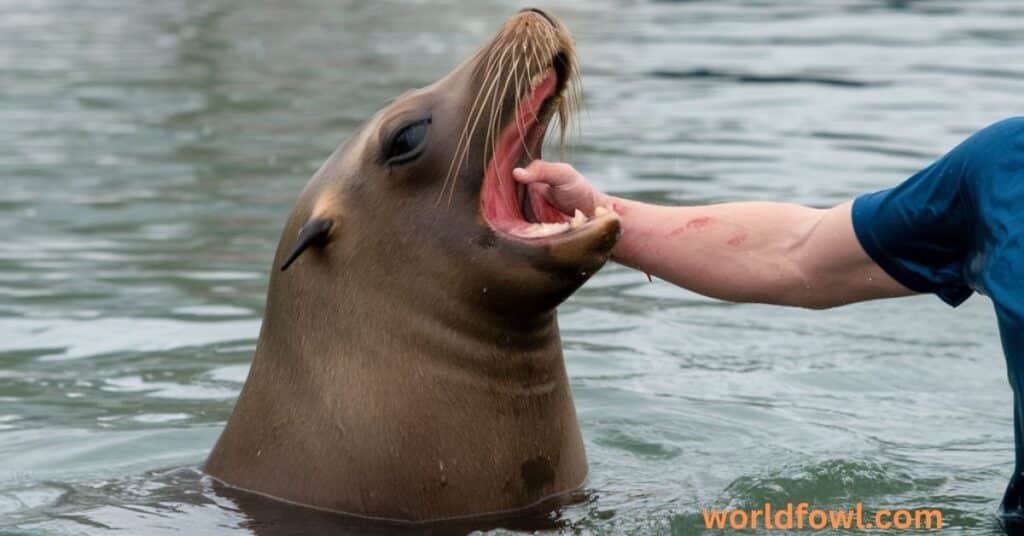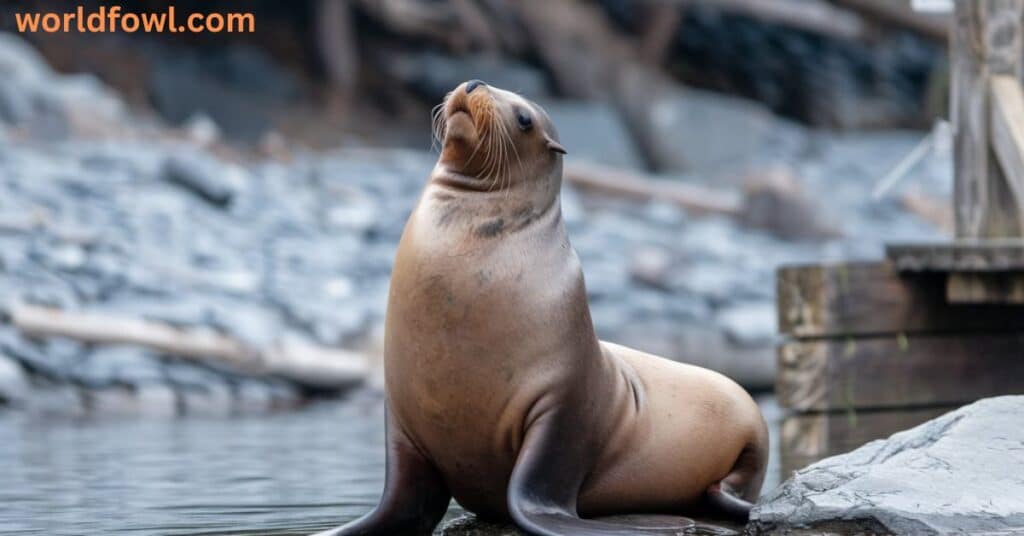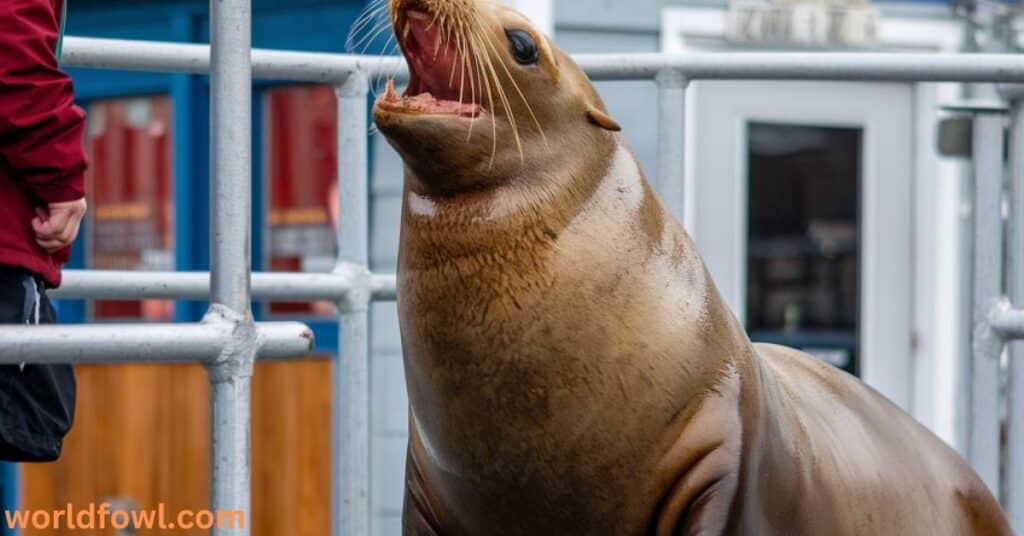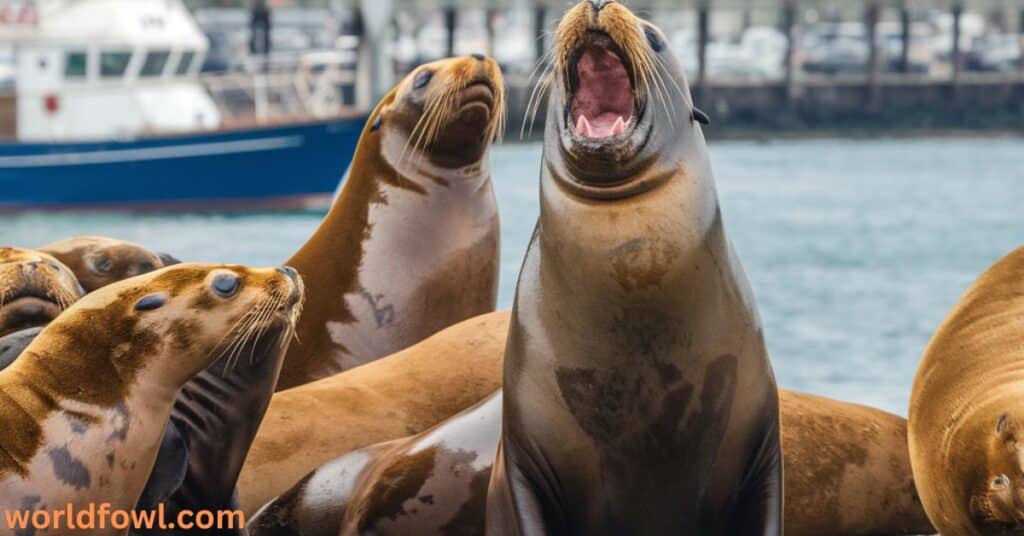Sea lions are undeniably fascinating marine mammals. With their playful demeanor and remarkable agility in the water, they often captivate anyone lucky enough to see them up close. But while these creatures may seem cute and friendly, you might be wondering: Do Sea Lions Attack Humans? The truth might surprise you. Sea lions, much like any other wild animal, can be unpredictable. They may be relatively harmless in most interactions, but under certain circumstances, they can become dangerous.
In this article, we’ll dive deep into the behavior of sea lions, uncovering why they may attack, notable case studies of sea lion attacks, and how to stay safe around them. We’ll also explore important wildlife safety tips and the role of human interference in nature, ensuring that you can observe these magnificent creatures responsibly.
Who Are Sea Lions?

Sea lions belong to the pinniped family, which includes seals, walruses, and other marine mammals. They are easily recognizable by their external ear flaps, robust bodies, and ability to move on land using their large flippers. There are several species of sea lions, with the California sea lion and Steller sea lion being among the most well-known.
Physical Traits and Behavior
Sea lions have thick, muscular bodies and large, sharp teeth designed for catching and eating fish. They are skilled swimmers, using their powerful front flippers to propel themselves through the water at speeds of up to 25 miles per hour. They also rely on their back flippers for movement on land, allowing them to “walk” in a way that sets them apart from seals, which use their flippers more for dragging themselves.
Sea lions are social animals, often seen in large groups known as colonies or rafts. These groups help provide protection from predators, and male sea lions can become quite territorial, especially during the breeding season. As we’ll explore, this territorial nature can lead to aggression, particularly when they feel threatened by humans or other animals.
Here’s the section “Who Are Sea Lions?” formatted into a table:
| Aspect | Details |
|---|---|
| Taxonomy | Sea lions belong to the Pinnipeds family, which includes seals, walruses, and other marine mammals. |
| Physical Traits | – Robust bodies with external ear flaps – Large sharp teeth for catching fish – Strong front flippers for swimming and back flippers for moving on land |
| Species | – California Sea Lion (Zalophus californianus) – Steller Sea Lion (Eumetopias jubatus) – New Zealand Sea Lion (Phocarctos hookeri) |
| Habitat | Coastal regions, especially on rocky shores, islands, and coastal ecosystems in places like California, Alaska, and New Zealand. |
| Social Behavior | – Highly social animals – Live in colonies or rafts – Males are territorial, especially during mating season |
| Size | – Males: Up to 1,000 pounds and 8-10 feet in length – Females: Up to 250 pounds and 6-8 feet in length |
| Diet | Primarily fish, squid, and sometimes smaller marine mammals. Sea lions are excellent hunters, capable of diving to depths of over 500 feet. |
| Swimming Abilities | Can reach speeds up to 25 mph underwater and dive as deep as 500 feet. They are agile swimmers, using their front flippers to propel through the water. |
| Unique Features | – Capable of “walking” on land using their large front flippers – Vocal communication through barks, roars, and growls |
| Lifespan | Typically live around 20-30 years in the wild. |
This table breaks down the key characteristics of sea lions in a concise and easy-to-read format!
See Also : Do Pelicans Attack Humans? Pelicans Up Close
Why Do Sea Lions Attack Humans?

While sea lions are generally not aggressive toward humans, certain factors can trigger a defensive or aggressive response. Understanding why sea lions may attack humans requires a look at their behavior and the environments they inhabit.
Territorial Behavior
One of the primary reasons for sea lion attacks is territorial behavior. Male sea lions, especially during the breeding season, are highly protective of their territory and will fiercely defend it against intruders. This is most commonly seen on haul-out sites (places where sea lions rest) or during the mating season when males are competing for the attention of females. If a human unknowingly encroaches on this space, the sea lion may feel threatened and act aggressively to protect its domain.
Perceived Threats
Like many wild animals, sea lions can perceive humans as threats, especially when they feel cornered or trapped. For example, if a sea lion is stranded on land or cannot escape into the water, it may lash out in self-defense. Similarly, sea lions may feel threatened when humans approach their young, which they are highly protective of.
Health Issues
Sea lions, like all animals, can also become aggressive due to health issues. Conditions such as domoic acid poisoning—which can occur when they ingest toxic algae—can lead to disorientation and aggression. The effects of this poisoning are well-documented and have been linked to erratic behavior, including attacks on humans and other animals.
Human Provocation
Sometimes, human interference in nature is to blame. Feeding wildlife or getting too close to sea lions can provoke aggressive responses. Wild animals, including sea lions, may begin to associate humans with food, causing them to approach people more frequently. This change in behavior is dangerous for both humans and the animals involved. Feeding sea lions can alter their natural instincts and cause them to become more aggressive, especially if they feel threatened or hungry.
See Also : Do Hummingbirds Attack Humans? Unexpected Aggressors!
Notable Incidents of Sea Lion Attacks

While incidents of sea lions attacking humans are relatively rare, there have been notable cases that highlight the potential danger when humans do not respect the wildlife viewing guidelines or approach these animals too closely.
Case Study 1: The Girl at the Pier (2017)
One of the most widely reported sea lion attacks occurred in 2017 at the Steveston Pier in Richmond, British Columbia. A young girl was sitting on the dock when a California sea lion suddenly lunged out of the water and dragged her into the harbor. The girl was pulled underwater before bystanders were able to rescue her. The attack was believed to have been triggered by the sea lion’s interest in the girl’s movement and the proximity of food being thrown into the water by other people.
The incident drew attention to the dangers of human-wildlife encounters and the risks associated with feeding or engaging too closely with wild animals.
Case Study 2: Surfer in Western Australia (2007)
In 2007, a surfer in Western Australia was attacked by a sea lion while paddling in the water. The sea lion reportedly bit the surfer’s leg and dragged him underwater for a brief moment. This attack was likely due to the sea lion perceiving the surfer as a threat or competitor in the water. Surfers and swimmers should be especially cautious around sea lions, as their behavior can be unpredictable, especially when they feel threatened or are defending their territory.
Case Study 3: Recent Incident (2023)
In 2023, a sea lion attacked a tourist near Santa Cruz, California. The victim, a photographer, was on a boat when the sea lion lunged toward them. The attack left the photographer with serious injuries, and witnesses reported that the sea lion seemed agitated and territorial. The incident once again highlighted the importance of maintaining a safe distance from sea lions and other marine mammals.
Other Recorded Incidents
In addition to the above case studies, there have been several other recorded incidents where sea lions have shown aggression toward humans. These include attacks on boaters, swimmers, and even researchers. Many of these incidents involve sea lions that felt cornered, threatened, or provoked, underscoring the need for caution when engaging with these animals.
See Also : Do Squirrels Eat Bird Eggs?
Human-Specific Factors Leading to Sea Lion Aggression

While sea lions are generally not dangerous to humans, certain human behaviors can trigger aggression. Let’s break down some of the key factors.
Feeding Sea Lions
Feeding wildlife is one of the most common reasons for increased aggression in sea lions. When humans feed sea lions, the animals start to associate people with food. This can cause them to approach humans more frequently, and if the food is not offered, they may become aggressive. Feeding sea lions also alters their natural foraging behavior, which can be harmful to their long-term survival.
Approaching Sea Lions Too Closely
Getting too close to a sea lion, especially during the breeding season or when they are resting on a haul-out, can provoke an attack. Sea lions are protective of their space and may interpret an approaching human as a threat.
Disturbing Pups
Mother sea lions are incredibly protective of their pups. Approaching a pup or disturbing its resting area can result in a defensive attack by the mother. The risk is heightened during the breeding season, when emotions run high and territorial behavior is at its peak.
Unpredictable Nature
Sea lions, like all wild animals, can be unpredictable. Even a seemingly calm animal may lash out if it feels threatened or cornered. It’s important to always respect their space and avoid making sudden movements that could startle them.
See Also : Do Jack Rabbits Attack Humans?
Preventing Sea Lion Attacks

To ensure safe interactions with sea lions, it’s essential to follow a few prevention tips and wildlife safety guidelines.
Stay at a Safe Distance
When observing sea lions, always maintain a safe distance. This applies both to land-based viewing and marine-based encounters. A good rule of thumb is to stay at least 50 yards away from any sea lion, and even further if you’re near a breeding colony.
Respect Their Space
Never approach sea lions on beaches, docks, or other haul-out sites. These are critical areas for their survival, and disturbing them can lead to aggressive behavior.
Avoid Feeding Sea Lions
Never feed sea lions, as this can encourage them to approach humans in search of food. Additionally, it disrupts their natural hunting and foraging patterns, which can negatively impact their health and behavior.
Be Cautious During Breeding Season
During the breeding season, sea lions are more territorial and protective of their space. This is the time of year when aggressive encounters are more likely to occur, so it’s especially important to maintain a safe distance from colonies during this time.
Know When to Back Away
If you find yourself too close to a sea lion or if it begins showing signs of aggression (such as charging, barking, or growling), it’s important to back away slowly. Do not make sudden movements, and avoid eye contact, which can be perceived as a challenge.
FAQs
Are Sea Lions Generally Dangerous to Humans?
No, sea lions are not typically dangerous to humans. They are generally curious and non-aggressive animals. However, like all wild animals, they can become dangerous if provoked, threatened, or cornered.
What Should I Do if I Encounter a Sea Lion?
If you encounter a sea lion, maintain a safe distance. Avoid making sudden movements, and never approach or try to touch them. If the animal seems agitated, calmly and slowly back away.
Can Sea Lions Be Friendly Towards Humans?
While some sea lions, especially those in captivity or those habituated to humans, may show curiosity or tolerance toward people, wild sea lions should be treated with caution and respect.
What Is the Best Way to Observe Sea Lions Safely?
The best way to observe sea lions is from a safe distance, using binoculars or cameras with zoom lenses. Always respect the wildlife viewing guidelines and avoid disturbing them.
Conclusion: Do Sea Lions Attack Humans?
While sea lions are not naturally aggressive toward humans, they can attack when they feel threatened, cornered, or provoked. Understanding their behavior, especially during the breeding season or when they are ill or injured, is key to staying safe. By following wildlife safety guidelines, respecting their space, and being cautious in areas where human-wildlife encounters are common, you can avoid dangerous situations and safely enjoy observing these incredible marine mammals.
Remember: aggressive wildlife behavior is often a response to human actions. By being responsible and respectful, we can all help protect these magnificent creatures and ensure our safety as well.

Henry James is a seasoned blogger and a passionate storyteller on “World Fowl.” With years of experience crafting engaging content, he brings a unique blend of expertise and creativity to his writing. Henry specializes in exploring diverse topics with depth and clarity, captivating readers worldwide.







